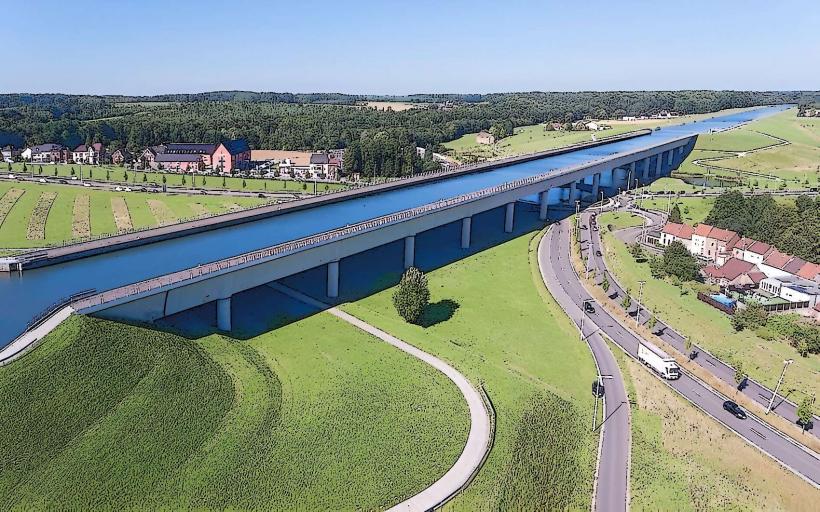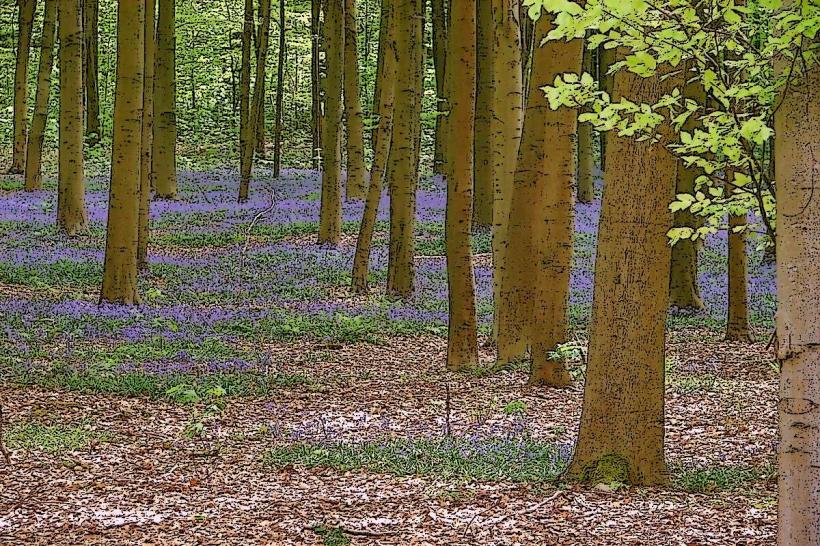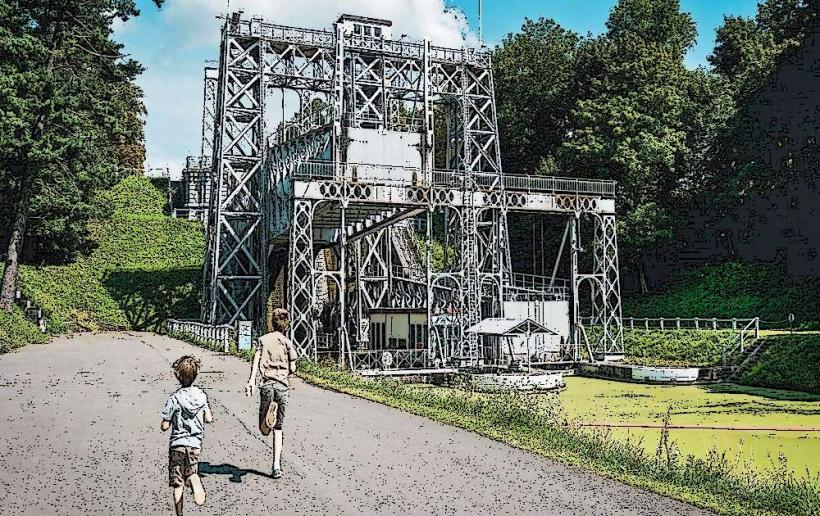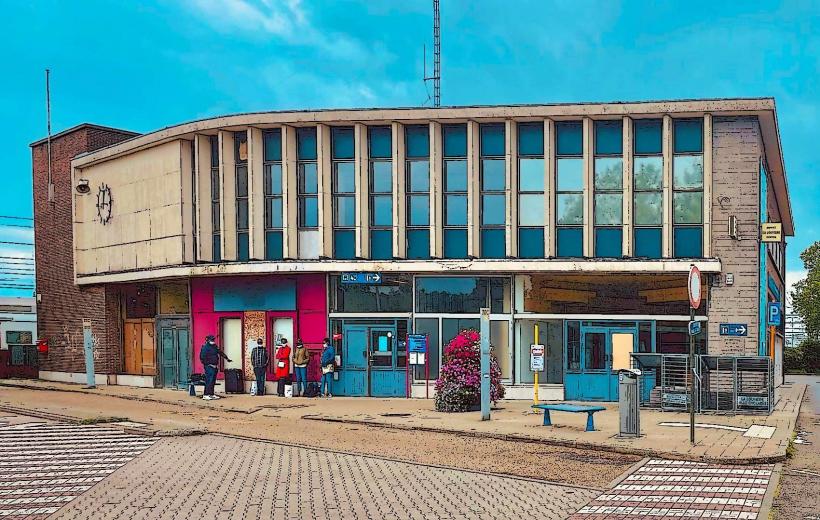Information
City: La LouviereCountry: Belgium
Continent: Europe
La Louvière is a city in the Walloon Region of Belgium, located in the province of Hainaut, about 50 kilometers south of Brussels. Known for its industrial past, particularly in coal mining and steel production, La Louvière has transformed into a modern city that balances its rich industrial heritage with efforts in urban renewal and cultural development. The city is named after the wolf, as "Louvière" is derived from the French word for "wolf's den."
History and Foundation
- Early History: The area that would become La Louvière was initially rural, with its history dating back to medieval times. It was relatively unknown until the 19th century when industrialization began to take hold in the region.
- Industrial Era: The city's development as an industrial hub started with the arrival of coal mines and steel factories in the 1800s, which spurred the growth of its population and economy. La Louvière became one of the key cities of the Belgian industrial revolution, with mining and ironworking being central to its economy.
- Post-Industrial Era: As with many industrial towns, the mid-20th century saw the decline of traditional industries, particularly coal mining, which led to economic challenges. However, in recent decades, La Louvière has undergone a significant transformation with efforts to preserve its heritage while embracing modern development.
Key Landmarks and Attractions
La Louvière is home to several notable landmarks and attractions that reflect its industrial history as well as its cultural growth.
La Louvière Canal and Boat Lift: One of the most famous attractions in the city is the boat lift on the Canal du Centre, a series of four boat lifts built in the early 20th century. These lifts are part of the UNESCO World Heritage-listed Canal du Centre, which is a system of locks designed to allow boats to travel along the canal despite the steep gradients. The boat lifts in La Louvière are among the few remaining in Europe and offer a fascinating glimpse into historical engineering.
Museum of the Mining Industry (Le Musée de la Mine): As a city with a strong industrial past, La Louvière is home to the Museum of the Mining Industry, which showcases the history of coal mining in the region. The museum offers exhibits on mining tools, the lives of miners, and the importance of coal to the city's economic development. Visitors can also tour former mine shafts and underground galleries to experience the harsh conditions miners faced.
La Louvière Town Hall (Hôtel de Ville): The Town Hall of La Louvière is an important architectural landmark. Built in the early 20th century, the building features Art Deco and neo-Renaissance styles, and it remains a central point for civic life in the city. The city square in front of the Town Hall is often used for local events and gatherings.
Eglise Sainte-Albert: This church is a beautiful example of neo-Gothic architecture and is a key landmark in the city. It is notable for its towering spire and intricate stained-glass windows that depict scenes from the Bible.
Centre of Art and History (Centre d'Art et d'Histoire): This cultural center in La Louvière houses exhibits related to the city's industrial past as well as contemporary art. It is an excellent place to learn about the history of the region and see local and international art exhibitions.
Lac de l'Eau d'Heure: A short drive from La Louvière, the Lac de l'Eau d'Heure is the largest lake in Belgium and a popular destination for outdoor activities. The lake offers opportunities for boating, fishing, and water sports, as well as hiking and cycling along its shores. The surrounding area is a beautiful natural reserve perfect for those looking to escape urban life.
La Louvière’s Market: Every Thursday and Sunday, La Louvière hosts a traditional market where vendors sell fresh produce, local specialties, and various goods. The market is a lively spot for both locals and visitors and offers an authentic taste of the city’s culture.
Culture and Festivals
La Louvière has a lively cultural scene, with various events and festivals throughout the year that celebrate both its heritage and modern cultural expressions.
La Louvière Carnival: One of the highlights of the city’s calendar is the Carnival of La Louvière, a traditional event that takes place in February. The carnival is famous for its costumes, parades, and festivities. Participants wear elaborate masks and costumes as they take to the streets in a colorful procession.
Festival of Walloon Song: Held annually, this music festival celebrates Walloon culture and music, featuring local and national artists performing traditional and contemporary songs. It’s an important cultural event that highlights the region’s musical heritage.
Fête de la Musique: La Louvière also participates in the Fête de la Musique, an international festival celebrating live music. The streets of the city come alive with performances of various musical genres, from classical to contemporary.
Contemporary Art Exhibitions: The city hosts regular art exhibitions at the Centre d'Art et d'Histoire, showcasing works from local and international artists. These exhibitions cover a wide range of media, including painting, photography, and sculpture.
La Louvière Jazz Festival: Jazz lovers can enjoy the La Louvière Jazz Festival, which brings together jazz musicians from across the globe to perform in various venues throughout the city.
Cuisine
La Louvière’s culinary scene reflects both Walloon and Belgian traditions, offering a range of local and regional dishes.
- Chicons au Gratin (Endives au Gratin): A traditional Belgian dish made with Belgian endives wrapped in ham and covered in a creamy béchamel sauce, then baked in the oven.
- Carbonnade Flamande: A classic Belgian beef stew made with beer, onions, and mustard, served with frites (fries) and often enjoyed in local brasseries (Belgian pubs).
- Moules-frites: As in much of Belgium, mussels served with fries is a popular dish in La Louvière, especially when paired with a Belgian beer.
- Tarte au Riz: A regional dessert, Tarte au Riz is a rice pudding pie often made with shortcrust pastry and a creamy filling of rice, milk, and sugar.
Transportation
La Louvière is well-connected to other cities in Belgium, especially Brussels and Mons.
- By Train: La Louvière has two train stations, La Louvière Centre and La Louvière Sud, both of which are connected to the Belgian national rail network. The train provides easy access to cities like Brussels, Mons, and Charleroi.
- By Car: The city is accessible via the E19 motorway, connecting La Louvière to both Brussels and Mons, as well as other regions in Wallonia.
- By Bus: The TEC bus network offers services connecting La Louvière to surrounding towns and cities, including Jodoigne, Nivelles, and Châtelet.
Conclusion
La Louvière is a city with a rich industrial history that has reinvented itself in recent years as a cultural and artistic center. From the impressive Canal du Centre boat lifts to its vibrant festivals and art scene, La Louvière offers visitors a unique blend of industrial heritage and modern-day creativity. Whether exploring its museums, enjoying local cuisine, or experiencing the city's lively cultural events, La Louvière offers something for everyone.





